Copper Toxicity
Copper toxicity is a condition in which copper is retained and begins to build up in the body tissues. Dr. Carl Pfeiffer and other pioneering practitioners first warned of this problem in the 1970's. The circulation and proper utilization of copper in the body requires good functioning of the liver, gall bladder and adrenal glands. If any of those organs are impaired, the body cannot properly excrete and utilize copper. Initially, the copper will build up in the liver, further impairing its ability to excrete copper. As copper retention increases, it will build up in the brain, the joints and the lungs, adversely affecting the structure and function of the tissues.

Copper is a powerful oxidant causing inflammation and free radical damage to the tissues. To avoid these toxic effects, it must be bound to the binding proteins, ceruloplasmin and metallothionine. These proteins can become deficient due to impaired adrenal and liver function which allows free copper to build up. It can have a toxic effect (similar to other heavy metals) on the body and mind and it is a contributor to many chronic illnesses and mental disturbances.
"According to Paul C. Eck, a researcher who studied tissue mineral states and their effects on health for 25 years, weak adrenal gland function is the most important physiological cause of copper imbalance. Healthy adrenal activity is required to build proteins, including one called ceruloplasmin, which is the main copper-binding protein in the body. Ceruloplasmin is necessary for the proper transportation and utilization of copper. If the adrenals become weak from too much stress, the liver makes less ceruloplasmin, and unbound copper starts to gather in various tissues and organs.
Healthy adrenals also send signals to the liver to detoxify and excrete excess copper. If adrenal function is diminished, then copper retention rises. The weaker the adrenal glands become, the more metabolism slows, and the more copper tends to accumulate.
...This means that the more stress we're under, the more likely we are to develop copper excess or zinc deficiency that leads to adrenal insufficiency -- and the more likely we are to develop adrenal insufficiency that leads to copper excess or copper-zinc imbalance! It's not surprising, therefore, that individuals who have copper overload almost always have adrenal insufficiency.
Why Am I Always So Tired?, by Ann Louise Gittleman
(As an Amazon Associate I earn a small amount from qualifying purchases)
Subscribe to THE HEALING PROCESS newsletter on Substack
Sources of Copper
Copper is common in the diet, particularly in vegetarian diets, and can be found in the water due to copper plumbing. Many multiple vitamins contain relatively high doses of copper. Zinc and manganese deficiencies will also cause copper retention. The hormone estrogen promotes the retention of copper and this is why women are particularly vulnerable to the problem of copper toxicity.
However, prolonged adrenal stress can eventually cause the problem in both men and women. Some children are born with high copper levels as it can be passed through the placenta and the high estrogen of pregnancy can worsen any copper retention the mother has.
Effects of Copper
Physically, the copper build up interferes with proper conversion of thyroid hormone at the cellular level. It also disturbs zinc balance, interfering with adrenal hormone production and this weakens the immune system. The impairment of both thyroid and adrenal gland function causes the most common copper toxicity symptom: fatigue.
It inhibits cortisol (glucocorticoid) production which causes hypoglycemia and increased inflammation, and increases aldosterone (mineral corticoid) production which enhances brain activity and can give a feeling that the mind is racing.
It is stimulating and irritating to the nerves and can lead to headaches including migraines, neuralgia, such as sciatica or trigeminal neuralgia, and other neurological conditions such as epilepsy and tremors. It causes joint pain and arthritis, digestive problems, irritable bowel, overgrowth of candida albicans, breathing difficulties including asthma, and chronic skin problems which can range from acne to psoriasis.
It's relation to estrogen levels makes copper toxicity a common cause of menstrual disorders, uterine fibroids, PMS and hormone imbalances. Copper gives a temporary boost to an exhausted system so cravings for high copper foods such as coffee, chocolate, avocados, shrimp and lobster, soy and fruit are very common.
"As excess copper builds up in an individual's tissues, more energy production is required in order to eliminate the accumlated excess tissue copper. However, since one of the effects of the excess copper buildup is the slowing of thyroid gland activity, the body's capacity to produce energy is diminished. Therefore, as a person becomes more and more copper toxic, the body's capacity to produce the energy necessary to eliminate the excess copper is diminished and the copper will continue to accumulate."
"...as a person's stress level increases and intensifies, he or she is more likely to develop a calcium shell, especially if he/she is in a constant highly stressful situation, i.e., an abusive intimate or close relationship, a demanding job situation, or intense academic pressure to name a few. This is because, under stress, a person tends to lose magnesium and zinc from their cells and tissues. As magnesium is lost from cell and tissue storage, more soft tissue calcification is likely to occur and the Cal/Mg ratio will increase. These mineral changes lead to increased muscle tension, more unstable blood sugar levels, diminished awareness of one's feelings, and lower energy levels. Depression and anxiety may also increase in frequency and intensity. Since zinc antagonizes copper, a drop in zinc allows copper and calcium to increase even more."
The Strands of Health: A Guide to Understanding Hair Mineral Analysis, by Rick Malter, Ph.D.
(As an Amazon Associate I earn a small amount from qualifying purchases)
Copper is a Heavy Metal
The tendency of copper to build up in the body is similar to that of iron. As the danger of excessive iron was not recognized for many years, the problem of copper retention is only now being widely recognized. Both copper and iron must be bound to specific proteins in order to be safely transported through the blood.
Both metals are highly reactive with strong electrical conductivity. This makes them prone to creating free radical activity and damaging many cells when in a free form. This is true for all heavy metals which is why they all eventually contribute to adrenal fatigue. The presence of excess heavy metals, including copper, is a constant source of stress which eventually exhausts our ability to respond properly to stress.
Mineral Balance
The body has an intricate system of checks and balances which operate through the mineral levels and ratios. Nutritional Balancing is a system of healing that works very specifically with these checks and balances. If one mineral becomes deficient, another mineral will accumulate and may become excessive.
When sodium and potassium levels go down, calcium and magnesium levels will rise. If copper drops, iron increases. If zinc rises, copper will decrease. If iron rises, chromium levels decrease. The body controls many body functions through the modification of the mineral ratios.
Copper initially raises the sodium level, and the body will retain copper to shore up a dropping sodium level (due to unremitting stress) in order to support mineral corticoid production. Copper is also essential to the final step in energy production in the Krebs cycle in the mitochondria, one of the main energy producing processes in the body.
Copper and Stress
An accumulation of copper serves a purpose, in the short run, as a defense against stress. As the body loses zinc under stress, sodium increases along with copper. Both of these changes increase oxidative respiration and energy production in the cells. This is a short term defense against stress which we all need. It is only when it becomes chronic that copper toxicity results.
During acute stress, the loss of zinc and magnesium and the retention of copper serve the body, and improve the adrenal response to stress. With chronic, unrelenting stress, or extreme, catastrophic stress--these defenses begin to work against us.
Stress is a normal part of life and is a natural aspect of being productive and vigorous. Accomplishment and creativity always result in some stress. Our bodies were designed to be able to thrive on a certain amount of stress. But if stress is such that you cannot cope, make decisions, concentrate, or get work done, then the stress is excessive and can eventually result in copper toxicity and adrenal fatigue. The adrenal glands become depleted when they do not have the time and nutritional support to recharge.
See Regaining Balance for more details on the effects of chronic stress and the process of correcting a maladapted stress response. Restoring the autonomic nervous system is essential for health recovery and restoring copper metabolism.
Stress and Your Emotions
Copper toxicity reduces the ability to cope normally with stress and the inability to respond adequately can provoke many fearful emotions, including anxiety and panic. In many cases, the body over-reacts to nearly any stress rather than under-reacting. This constantly puts the body into a full fight or flight defensive reaction which normally includes the emotions of anger and fear. This is why chronic stress and adrenal fatigue are often associated with anxiety, panic, phobias and compulsions.
Hypoglycemia and blood sugar swings due to adrenal fatigue are a well known cause of many mental and physical symptoms such as depression, irritability, mood swings, poor concentration, poor memory, dizziness, fatigue and sleepiness.
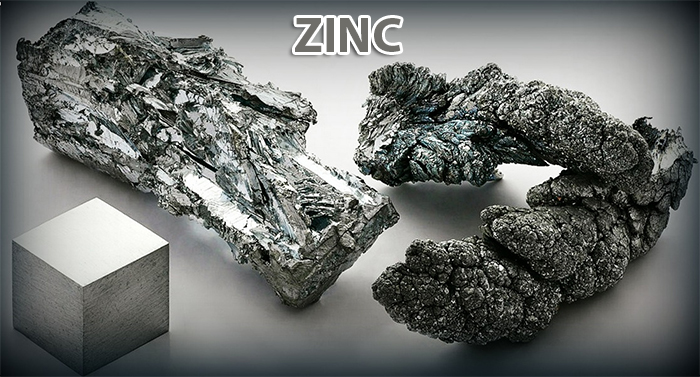
Copper/zinc Imbalance
Copper toxicity is particularly disturbing to the body and mind because of its effect on zinc. Zinc is an extremely important nutrient and a deficiency has a wide range of consequences. Zinc is used up rapidly under stress, and when stimulants such as coffee, alcohol and sugar are used.
Zinc is a sedative, calming mineral for the brain. When copper becomes high, zinc levels drop, increasing the stimulating effect of copper on the mental functions. GABA, an inhibitory, calming neurotransmitter, is zinc dependent.
The ideal ratio of copper to zinc is 1:8 in favor of zinc. Zinc is usually accompanied by copper in the diet. The only common food that has high zinc without high copper is meat and to a lesser degree, eggs.
Copper is a common element in many foods and so being able to excrete it normally and regularly is a more important concern. A zinc deficiency will impair the ability to excrete copper. Copper deficiency usually only occurs with severe malnourishment as in anorexia.
Zinc Is Essential For Protein Synthesis
Zinc is essential for the body to synthesize protein so a deficiency often is revealed in the condition of the protein structures of the body such as the skin and nails. Stretch marks are always a sign of low zinc as the skin depends on zinc for its normal integrity. A deficiency allows the skin to tear just below the surface and produces scars.
Zinc is used up rapidly when tissue healing demands it after injury, or surgery. Low zinc impairs wound healing due to impaired protein synthesis. Teenagers are vulnerable to zinc deficiency due to their rapid growth.
Low zinc impairs the immune system. Zinc can destroy some viruses on contact and a deficiency can increase susceptibility to viruses. The adrenal glands are essential for good immune function and zinc is essential for the production of the adrenal cortical hormones aldosterone and cortisol.
Zinc and Appetite
Zinc is required for a normal appetite and normal smell and taste. Poor appetite, especially in the morning with some light morning nausea, is typical when zinc is low. Copper/zinc imbalance is common in teenage girls and if it becomes severe enough anorexia can result.
Protein intolerance is also common when copper is high and zinc is low. An inability to tolerate certain protein foods, particularly red meat or possibly any meat or eggs, is typical in more severe cases of copper/zinc imbalance. The tendency to adopt a vegetarian diet in this case worsens the condition due to the low zinc content of the diet.
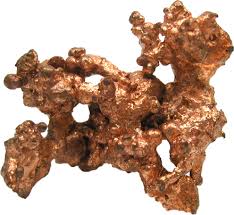
Copper and the Mind
Copper toxicity has a powerful effect on the mind. Depending on the severity of the toxicity and the susceptibility of the person, copper can affect the mind moderately or very severely. The milder effects are initially positive because it is activating and stimulating to the mind and can increase creativity and productivity. Many copper toxic people are very creative. The problems begin as the toxicity continues to build up, and it becomes more and more exhausting to the body while being stimulating to the mind.
It becomes a process of an exhausted body trying to keep up with an over active mind. The mind makes many plans which cannot be realized and frustration starts to become a dominant state. This can lead to depression and/or anxiety as this conflict continues to worsen. Short attention span is another result of the over-stimulation.
At first, switching back and forth between them is common as the stimulating effect alternates with the fatiguing effect. This can create a pseudo-bipolar condition. But over time, fatigue and depression will win out. Copper can also contribute to the development of schizophrenia and autism in susceptible people.
Although there is a very strong physical aspect to mental and emotional states, they are also strongly influenced by our own thoughts, beliefs, and habits. Part of what can happen as we become healthier, is that a certain kind of "lid" is removed from our emotions and minds. We may have relied on fairly strong emotional suppression which can be achieved by creating certain biochemical imbalances in an unconscious manner.
When we are specifically undoing those imbalances through the application of a targeted Nutritional Balancing program, we may find that we have to work on some underlying issues that this has allowed us to avoid in the past. The imbalances were acting as a kind of coping mechanism which we had come to rely on. It is almost like learning to live without cigarettes or alcohol if those were used as problems solvers in the past.
Although certain emotional aspects will very much improve as the copper clears out (for me this was noticeable after about six months), in other ways, we will be faced with issues we have been avoiding. Eliminating copper toxicity often results in an increase in awareness. As these aspects of our life and self become more visible, we may need to do some soul searching and habit breaking in regards to our beliefs and reactions to life.
Copper Is A Stimulant
Copper stimulates the production of the activating neurotransmitters epinephrine, nor-epinephrine, dopamine and serotonin. Anxiety, racing mind and insomnia are all signs of the over-production of these neurotransmitters. Copper also increases the electrical potential of the neuron, possibly due to the enhancement of the movement of sodium.
Pfeiffer and Goldstein (1984) demonstrated that brain waves exhibit an equivalent central nervous system stimulation from either 5 mg. of copper or 5 mg. of Dexedrine. The over stimulation caused by copper is equivalent to that induced by amphetamine usage. Amphetamines can produce a temporary psychosis from prolonged use.
As the liver becomes overloaded with copper, the body begins storing the excess in other organs, particularly the brain. Copper stimulates the di-encephalon, which is the emotional brain. Zinc stimulates the cortex or new brain which tends to calm the emotions.
Stress promotes the loss of zinc into the urine and the rise of copper leading to the over-activation of the emotions and exaggerated emotional responses, both high and low. The emotional state can alternate depending on the amount of stress, current diet, medications and hormonal changes. The swings can mimic bipolar conditions or be a part of premenstrual emotional problems.
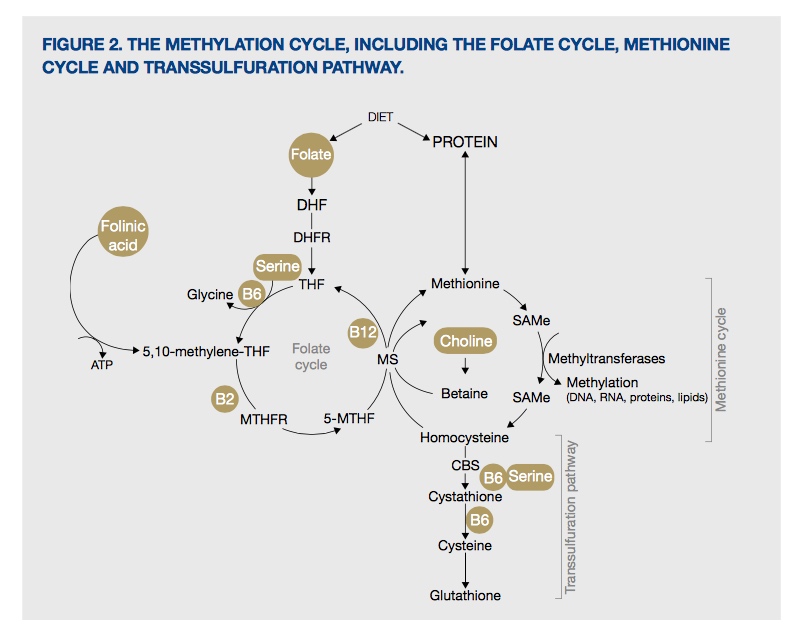
Methylation and The Mind
Numerous studies have shown that about one half to two-thirds of schizophrenics have high levels of copper along with low levels of zinc and manganese especially during acute phases. Carl Pfeiffer, Ph.D., M.D. studied over 20,000 schizophrenic and mentally ill patients over many years and found that high copper patients are also low in histamine.
The copper-containing enzymes, histaminase and ceruloplasmin, regulate histamine. Elevated copper increases the levels of these enzymes, promoting histamine breakdown. The low histamine levels, allow copper to continue to rise. Histamine is an essential protein metabolite (a product of metabolism) found in all body tissues. In the brain, it acts as a neurotransmitter. Low histamine is a marker for high copper.
Histamine and Methyl
Histamine levels are also related to the methylation cycle, a metabolic pathway that is essential for detoxification and for controlling free radical activity. Methyl and histamine compete with each other.
When histamine is high, it is a sign of under-methylation, and when histamine is low, there is over-methylation. With too much methyl, the body will overproduce dopamine, norepinephine and serotonin (the activating neurotransmitters), with too little methyl, the neurotransmitter levels are too low.
Methyl Controls Many Body Processes
Methyl is one of the more common organic chemicals in the body. Methyl groups (-CH3)are present in most enzymes and proteins. The methylation cycle is the process by which methyl groups are added to a compound. When a larger biochemical is methylated, it's structure and function change.
SAMe (S-adenosylmethionine) is the body's primary methyl donor. It methylates neurotransmitters, neurohormones (such as melatonin), proteins, membrane phospholipids (which form the cell membrane), the myelin sheath around the nerves and creatine (used in energy transfer).
If methylation is impaired, then neurotransmitter function, protein and cell membrane structure and function, fatty acid metabolism, allergic (histamine) responses, myelination of the nerves, and cellular energy transfer are all impaired. Methyl groups control genetic expression during fetal development and throughout life. A methyl group can attach to specific DNA sequences and turn off that gene. When the methyl group is removed, the gene is turned on.
The Methylation Cycle
When SAMe donates a methyl group (-CH3), it becomes SAH (S-adenosylhomocysteine) and then homocysteine. Methionine is the next most important source of methyl groups and it can be made from homocysteine by accepting a methyl group from the folic acid cycle.
Methylation requires a constant source of folic acid and vitamin B-12 (methylcobalamin). Low B-12 impairs the enzyme that converts homocysteine back into methionine (methionine synthase - MS).
Methylation and Glutathione
Oxidative stress (free radical activity) can also inhibit MS, so certain toxins such as mercury will disturb the methylation cycle. When a heavy toxic burden is present in the body, homocysteine will be shunted to the detoxification and antioxidant pathways to produce metallothionein and glutathione, rather than to the methylation cycle.
Homocysteine will be converted to cysteine, taurine or used as a source of sulfate to promote bile formation and heavy metal excretion. Cysteine is used in the formation of metallothionein and of glutathione, the most powerful antioxidant and an essential substance for heavy metal detoxification.
Methyl and Psychosis
Paranoid schizophrenia is associated with over-methylation, detected by low histamine, and high copper. The main symptoms in histapenic (low histamine) schizophrenics are auditory hallucinations along with suicidal depression, paranoia, religiosity and sleep problems. Supplements which reduce methyl include folic acid, vitamin B12, and vitamin B3. The copper/zinc imbalance must also be improved in order to reduce the destruction of histamine.
Impaired methylation is also seen in autism. In studies measuring the components of the methylation cycle , all of the methylation and transsulferation markers were much lower in autistic children. The nutritional supplements which often improve autistic symptoms support the normal function of these pathways. These include folinic acid, DMG, TMG, methylcobalamin (B12), zinc, B6 or P5P, glutathione, cysteine, and sulfate.
Metallothionein
Many people with over-methylation also have a metal metabolism problem related to under functioning of metallothionein. Metallothionein is involved in many functions of the body, including immunity, brain and gastrointestinal tract maturation, and the regulation of metals.
Metallothionein is essential for maintenance of the proper ratio of copper to zinc. So much so, that a zinc/copper imbalance is the indicator for a metallothionein malfunction. The malfunction could be due to a genetic weakness but may also be primarily induced by nutritional deficiencies and imbalances. The primary nutrient needed in the formation of metallothionein is zinc.
Metallothionein is crucial to the body in regulating and coping with toxic metals. It envelopes metals such as mercury, lead and cadmium, binding with them and carrying them out of the body. Mercury or lead in the gut require metallothionein in order to disable the toxic substance.
Metallothionein and Gluten/Dairy Intolerance
Without the metallothionein, the toxic metals are most likely to interact with chemicals called sulfhydral groups. A combination of sulphur and hydrogen, these groups have tremendous power to bind to mercury, lead, and cadmium but especially mercury.
Among the sulfhydral groups in the intestines are the enzymes that break down casein and gluten. Toxic metals and low zinc interfere with the enzyme’s function giving rise to gluten intolerance to grains such as wheat, rye, barley and oats, and to dairy intolerance. Gluten and casein intolerance are very common in conditions ranging from chronic fatigue and asthma to bipolar disorder, autism and schizophrenia.
Metallothionein and Autism
High copper, low zinc and signs of low metallothionein function with elevated levels of lead, cadmium, arsenic, antimony, and/or mercury occur in nearly every autisic patient tested.
At the Pfeiffer
Treatment Center all the symptoms and conditions relating to autism have
been found to correlate to the signs of a metallothionein deficiency.
Toxic Metals
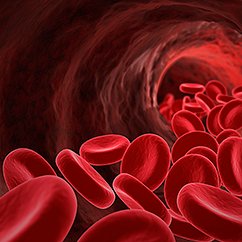
Pyroluria
Pyroluria is characterized by excess krytopyrrole in the urine. Kryptopyrrole binds with B-6 and zinc and is excreted in the urine resulting in B-6 and zinc depletion. This condition was discovered separately by Doctors Carl Pfeiffer and Abram Hoffer.
Studies have shown that 11% of the general population has some degree of pyroluria but 52% of schizophrenics and 42% of psychiatric patients are pyroluric. It is a hereditary condition and will show up to various degrees of severity in family members. Alcoholic families are very prone to have this condition as 40% of alcoholics are pyroluric.
Other family tendencies are cluster headaches and migraines, depression, fatigue which can become chronic fatigue, sensitivity to cold, anemia, nausea, lack of dream recall, and suicides or suicidal depression.
Onset of Pyroluria
The initial onset of a more severe pyroluric episode usually occurs during the teenage years often in response to stress. The high demand for zinc in the teenager is often a trigger for the onset of symptoms, but some symptoms will be seen from early childhood.
Stress intolerance is often seen throughout life as they react severely to stressful events such as love affairs, moving, going to college, joining the military or injuries and trauma.
Conditions Associated With Pyroluria:
- poor appetite
- motion sickness
- morning nausea
- blood sugar problems
- glucose intolerance
- sore low back
- upper left pain in the ribs
- rib pain when running
- drug and/or alcohol intolerance
- very chronic constipation
- crowded upper front teeth
- poor collagen synthesis affecting joint development
- tingling sensations, tremors, and cramps in the limbs
- convulsive seizures
- neuralgia
- late onset of puberty
- pale skin with little tanning
- prematurely grey hair
- pale, thin fingernails
- low stress tolerance, social withdrawal
- teenage amnesia, delinquency
- sweet, fruity acetone breath and body odor
- cold hands and feet, unexplained chills and fever
- vulnerable to infection, flu
- skin problems: stretch marks, acne, eczema, psoriasis
- poor wound healing
- dis-perceptions, delusions
- paranoia
- periodic loss of contact with reality
- easily irritated, can become violent
- easily fatigued, can be apathetic at times
- great drive and creativity earlier in life in spite of symptoms
Pyroluria and Glutathione
Vitamin B-6 or P-5-P, cysteine and zinc are rate limiting nutrients for the formation of glutathione the main anti-oxidant. Glutathione has many essential functions including maintaining mitochondrial integrity and ATP production (essential for energy).
It supports T-cells and protects against viruses, maintains the structural integrity of the gut and is the primary means of detoxifying and eliminating heavy metals and other toxins. It also maintains vitamin C and vitamin E in their active forms. The impairment of glutathione production due to the severe B-6 and zinc loss in pyroluria, accounts for a great many of the problems associated with it.
Pyroluria and Stress
Pyroluria is worsened by stress as the production of kryptopyrroles can double under stress. Therefore the condition can become relatively mild if stress is minimized. Many pyrolurics instinctively avoid stress and have often developed certain dietary approaches and supplement usages that do help the problem.
But under stress, the need for B-6 and zinc can become much higher than would normally be used, up to 2000 mg per day of B-6 and 90 - 120 mg zinc because they are being lost in the urine at a very high rate. Taking higher doses prior to stressful events can prevent an episode. The low zinc naturally results in a high copper condition and the long list of problems seen in this condition is in many ways a list of the effects of low B-6, low zinc and high copper.
Non-pyrolurics may have many of these conditions as it is not difficult to develop a B-6 and zinc deficiency with high copper due to chronic stress. The non-pyroluric will not need the very high doses of these nutrients in order to improve.
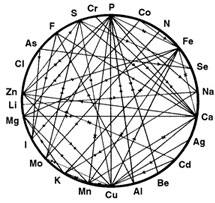
Nutritional Balancing and Copper Toxicity
The Nutritional Balancing system created by Dr. Paul Eck is the source of the science and methods for reversing the broad metabolic causes and effects of copper toxicity.
Slow oxidation, the Calcium Shell, and the adrenal impairment that results in low ceruloplasmin are all corrected by a properly prescribed Nutritional Balancing program.
The following information is specifically derived from Dr. Eck's Science of Human Energy, Nutritional Balancing:
Slow Oxidation
The effect of high copper on the adrenal and thyroid glands reduces the metabolism and creates a state of slow oxidation in the body. Oxidation Type is a concept developed by Dr. George Watson, a researcher at UCLA.
Oxidation means to burn or mix with oxygen. Those who burn food at a slower than ideal rate are slow oxidizers. Oxidation rate is mainly a reflection of thyroid and adrenal activity. Copper slows both glands down.
The first response to stress is to activate the body by increasing the oxidation rate as an alarm response. As the alarm stage persists for a long period of time, the oxidation rate begins to decline, moving into the resistance stage of stress.
Slow Oxidation and Chronic Stress
This can persist for many years with mildly slow oxidation and low adrenal hormone production. As exhaustion sets in, the oxidation rate becomes very slow. An alarm condition can be superimposed on the slow oxidation state creating a temporary fast condition, but the underlying metabolism is slow.
Those in slow oxidation tend to sweat less, have drier skin and hair, have a tendency toward constipation, along with fatigue, depression, apathy, low blood sugar, adrenal insufficiency and low blood pressure. The under-active thyroid can result in sluggishness, weight gain on the hips and legs, low body temperature and sensitivity to cold.
Slow oxidizers tend to be more withdrawn, introverted and less emotionally expressive. Extreme slow oxidation tends toward depression, despair and suicidal thoughts. As the slow oxidation becomes more extreme, more and more of these symptoms will develop.
The Calcium Brake
Oxidation rate is controlled by the four electrolyte minerals. Calcium and magnesium are part of the biochemical braking system. Sodium and potassium accelerate the metabolism by regulating the adrenocortical hormones. In other words, the higher the sodium and potassium are, the higher the production of adrenal hormones.
Newborns, who have a very high rate of metabolism, have relatively low calcium levels. As we age, the body begins to apply the calcium brake. As copper builds up, the calcium and magnesium levels rise while the sodium and potassium levels decline. The rise in calcium in the tissues is a defense against the chronic stress that is the cause and effect of copper toxicity.
Calcium and magnesium stabilize the body and prevent an excessive metabolism. As a defense against stress, slowing down the metabolism can slow down the rate of collapse and allows the build up of protective minerals such as calcium, magnesium, zinc and copper in the cells.
Calcium lines the cell membrane. A low calcium level makes the cell membranes more permeable and increases the metabolism. A high calcium level reduces membrane permeability, slowing all transport in and out of the cell and thereby reducing the rate of metabolism.
The Calcium Shell
Calcium retention can become so high that it creates the calcium shell phenomenon as the ultimate defense against stress. These minerals prevent the slow oxidizer from suffering any severe acute stresses by acting as a buffer and reducing the adrenal response to stress. The emotional response is dulled, and the mind slows down.
As calcium builds up in the tissues, as with copper, it becomes bio-unavailable for normal body functions. Many of the effects of copper toxicity are symptoms of deficiency of copper and calcium as they become less and less usable in the body while building up to toxic levels.
Magnesium
Magnesium is the other primary braking mineral which accumulates as the oxidation rate slows down. It is in involved in more energy producing reactions than possibly any other mineral. It is the first nutrient to be lost during stress.
Dropping the magnesium levels will quickly increase the metabolism and help mobilize the body to cope with stress. But if magnesium is too low, the system will burn out due to over-stimulation. Magnesium rises as the braking system becomes more dominant in slow oxidation.
Calcium tends to rise faster in the more exhausted person. This can create a high calcium and magnesium ratio which will disturb carbohydrate metabolism and lead to hyperinsulinism and hypoglycemia.
Slow Oxidation and Blood Sugar
Chronic hypoglycemia and Type 2 diabetes are strongly related to slow oxidation. Copper toxicity raises calcium and lowers potassium in the tissues. The impaired adrenal function reduces the production of cortisol, an important regulator of blood sugar levels.
The proper utilization of glucose for energy production is a major determinant of the oxidation rate. The low cortisol often results in chronic low blood sugar which manifests as a craving for sweets and starches, irritability and exhaustion before meals and other common hypoglycemic symptoms.
Potassium and Hypoglycemia
Potassium is needed to activate the thyroid hormone at the cellular level, converting T4 to the active form, T3. Low potassium results in low T3 production. This also impairs glucose utilization within the cell for energy production.
Poor cellular utilization of glucose can cause the same symptoms as low blood sugar even when the blood sugar levels are normal. The high calcium and magnesium reduce cell membrane permeability and impair the transport of glucose and insulin into the cells. This can contribute to cellular hypoglycemia, hyperinsulinemia and eventually result in diabetes as sugar remains in the blood instead of entering the cells.
Slow Oxidation and Aging
Sodium and potassium are the great solvents of the body. When the sodium and potassium decline in slow oxidation, minerals begin to drop out of solution and precipitate into the tissues. Calcium begins depositing in the arteries, joints, heart and skin. There is less flexibility. This is premature aging.
As slow oxidizers age, the body builds up more and more under utilized minerals in the form of iron deposits, manganese deposits and calcium deposits. These deposits lead to rigidity and creates the calcium shell as a defensive approach to life.
Children are naturally fast oxidizers and the slow oxidation rate is a sign of aging. Children in slow oxidation are becoming more and more common as high copper, chronic stress and low nutrition, high sugar diets make them old long before their time.
Effective Treatment of Copper Toxicity
Nutritional Balancing is the most effective healing system for reversing copper toxicity. Nutritional Balancing programs are given according to a special type of hair tissue mineral analysis test. Most hair tests are toxicity tests and the hair is subjected to washing and solvents at the lab. This helps to reveal more toxic metal in the test. At Analytical Research Labs, the lab founded by Dr. Paul Eck, the hair is not washed at the lab as the focus of the test is the nutrient minerals, not heavy metals. Some heavy metals do show up, but it is primarily a metabolic test, not a toxicity test.
The four major electrolyte minerals have the most testing significance and they can definitely be changed by washing. Once we have the results of a properly done hair tissue mineral analysis, we have a great deal of information about the metabolism, including endocrine function, glucose handling, protein utilization, current stress, chronic stress, and stress damage. We will see the effects of these metabolic states on nutrient levels, ratios and requirements. We may see some heavy metals, but in many cases they do not show up at all on the first test as the body sequesters the metals for protection from the toxic effects.
The special nutrient formulas given according to the hair tissue mineral analysis gives Nutritional Balancing its unique effectiveness in restoring metabolic balance and functions.
To learn more about Nutritional Balancing , go to the page for more information. To get a hair tissue mineral analysis to begin a program of Nutritional Balancing, go to the Contact page.